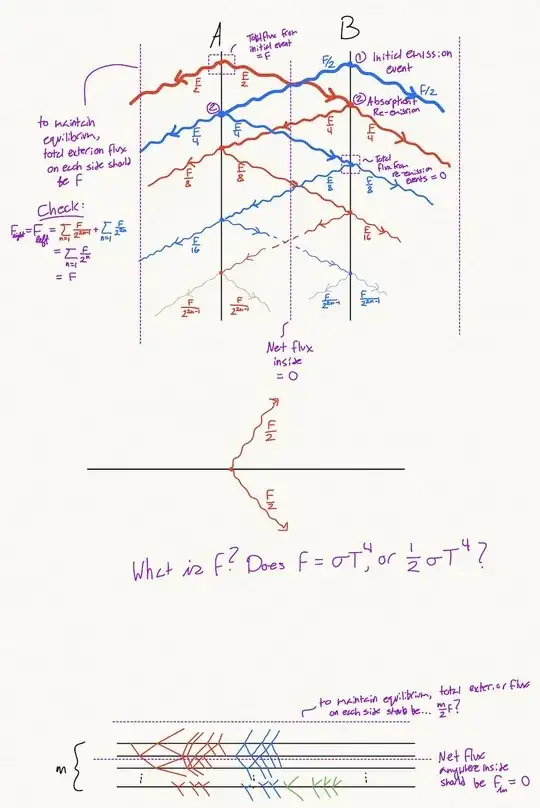This is something that's been bothering me. A solid object will emit radiation with a flux surface of $\sigma T^4$, but what about a plane?
Here is a thought experiment I came up with to help me make sense of this question:
Consider two infinite, parallel planes with zero thickness. They are perfect blackbodies and are at equilibrium with each other and have some constant internal heat source $F$ and have temperature $T$. They both radiate their heat $F = \sigma T^4$ equally in both directions, and immediately do the same for any absorbed radiation that is re-emitted.
Each time a package of radiation is emitted, half of it strikes the opposite plate to be absorbed and then re-emitted in the same way. Summing up the internal radiative flux, we always get zero, no matter the number of absorption + re-emission events. Summing up the leftward flux leaving the left plate, we get that it sums to $F$ after an infinite number of absorption + re-emission events. Conceptually, this makes sense: since the two plates are in equilibrium with each other, there is no net energy transfer between them, so all the energy leaving the system in both directions should total to $2F$.
Now, consider one such plane. The total flux observed through a far-away parallel surface is $F/2 = \sigma T^4 / 2$.
Here are my questions:
Does it make sense to talk about blackbody emission from something with zero thickness? If so, is my treatment of this system correct? If not, why?
What about $N$ such planes? Is the total flux observed through a far-away parallel surface equal to $NF/2 = N\sigma T^4/2$?
More importantly: what does this mean for solid objects, if solid objects (like a solid sphere) and hollow closed objects (like a spherical shell) radiate in the same way? Why do solid objects behave in this way and not like objects with many layers inside of them?
Are there any real-world objects that behave in this way, such as a single layers of atoms?
Diagram: There are a couple minor typos near the bottom of the diagram. Namely the label $m$ instead of $N$ plates, and $F = \sigma T^4/2$ should read $F = 2\sigma T^4$
